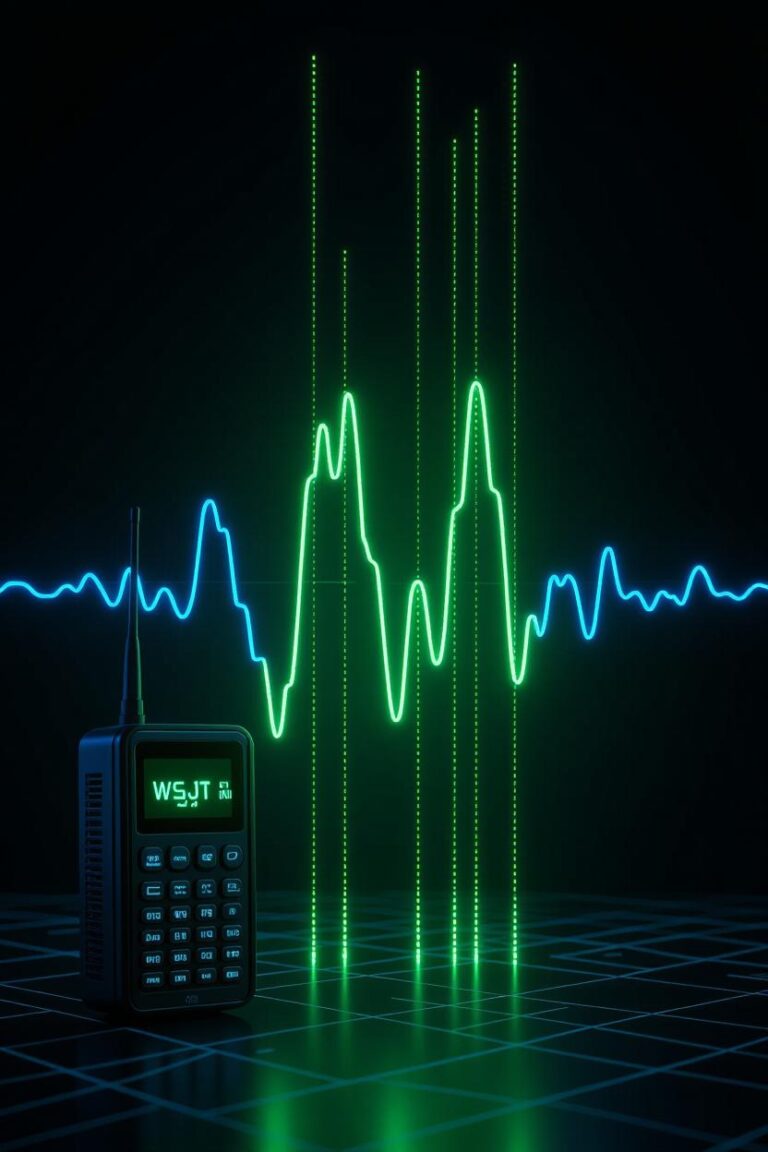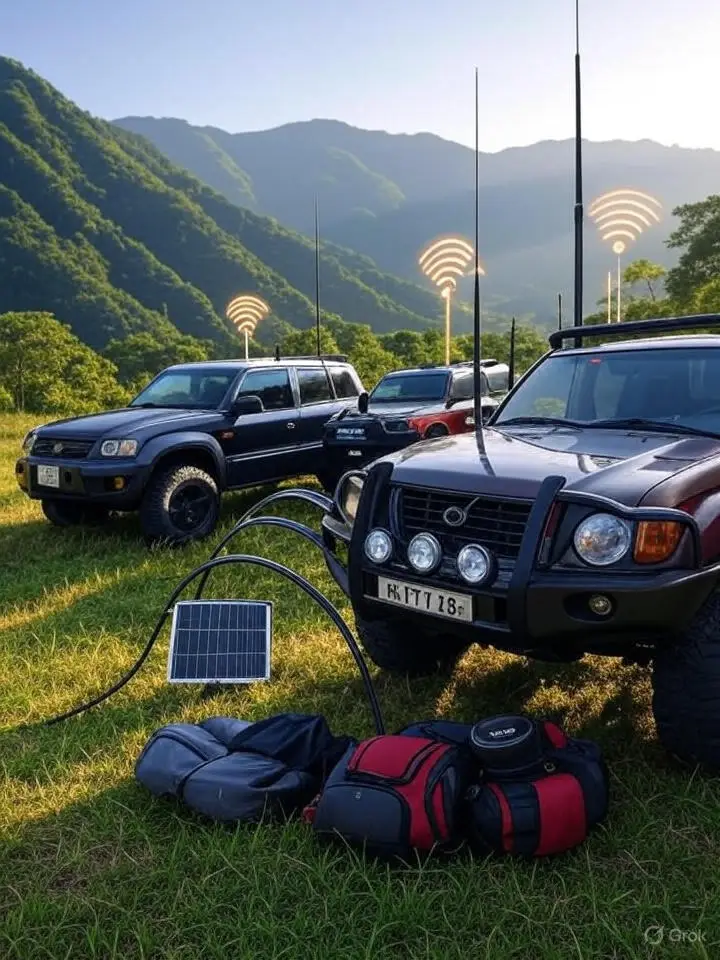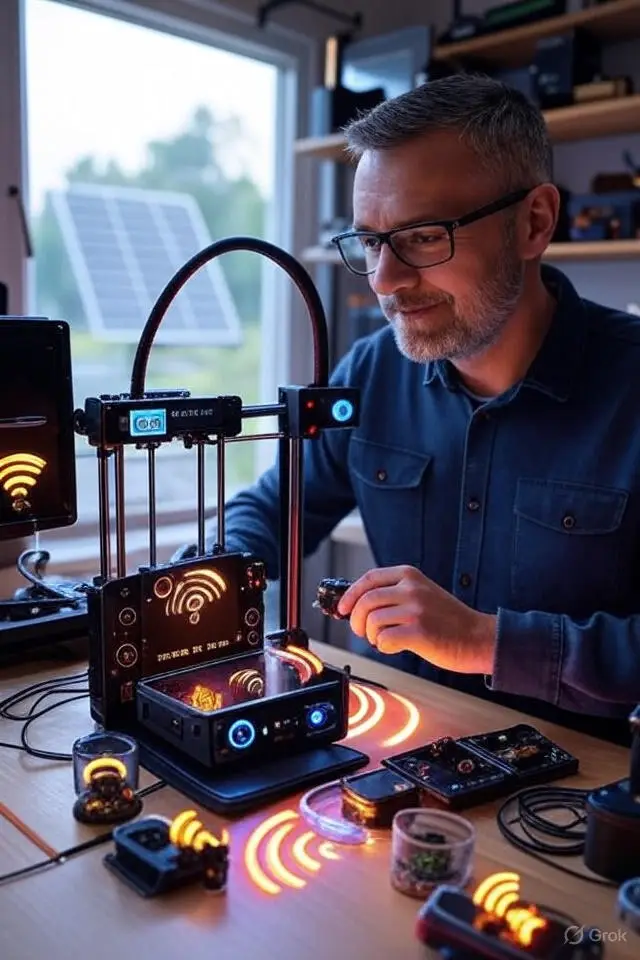
Amateur radio has undergone a dramatic transformation in recent decades, evolving from purely voice and Morse code communications to embrace a rich ecosystem of digital modes that push the boundaries of what’s possible on the airwaves. These digital modes have opened up new frontiers for weak-signal communication, efficient data transfer, and innovative ways to connect with fellow operators around the globe.
Understanding Digital Modes
Digital modes in amateur radio represent a fundamental shift from traditional analog communication methods. Most amateur digital modes are transmitted by inserting audio into the microphone input of a radio and using an analog scheme, such as amplitude modulation (AM), frequency modulation (FM), or single-sideband modulation (SSB). This approach allows operators to leverage existing radio equipment while accessing powerful new communication capabilities.
Digital mode communication in amateur radio relies heavily on Digital Signal Processing (DSP). The DSP software is responsible for converting the audio signals from the radio into digital data that the computer can process. The process involves analog-to-digital conversion, filtering to remove unwanted noise, and decoding to retrieve binary data that becomes readable text or audio.
The appeal of digital modes lies in their ability to achieve reliable communication under challenging conditions. Many digital modes can decode signals that are significantly weaker than what human ears could detect, making them ideal for low-power operation, poor propagation conditions, or when using compromised antennas.
Popular Digital Modes for Today’s Amateur
FT8: The Speed Dating of Ham Radio
Joe Taylor, K1JT, announced on June 29, 2017, the availability of a new mode in the WSJT-X software, FT8. FT8 stands for “Franke-Taylor design, 8-FSK modulation” and was created by Joe Taylor, K1JT and Steve Franke, K9AN. This mode has become phenomenally popular for its ability to make contacts under marginal conditions.
FT8 uses eight different tones spaced 6.25 Hz apart, occupying just 50 Hz of bandwidth. Each FT8 transmission encodes only 75 bits, with a 12-bit cyclic-redundancy check (CRC). That and the rapid turnaround time means that most operators rely on automation built into WSJT-X, as well as standardized messages, to make their FT8 contacts. The mode operates on 15-second transmit/receive cycles, allowing for quick exchanges of essential contact information.
What makes FT8 particularly attractive is its efficiency with low power. FCC replaced the baud rate limitation with a 2.8 kilohertz (kHz) bandwidth limitation in the affected bands, giving digital modes more flexibility for innovation while maintaining spectrum efficiency.
JS8Call: Conversational Digital Communication
For operators who want the robustness of FT8 but with the ability to have actual conversations, JS8Call offers an compelling alternative. JS8Call is a derivative of the WSJT-X application, restructured and redesigned for message passing using a custom FT8 modulation called JS8.
The idea with JS8Call is to take the robustness of FT8 mode and layer on a messaging and network protocol for weak signal communication on HF with a keyboard-to-keyboard interface. Unlike FT8’s rigid message structure, JS8Call allows for free-form messaging, making it possible to have actual conversations rather than just exchanging signal reports.
PSK31: The Efficient Conversationalist
PSK31 remains one of the most popular keyboard-to-keyboard digital modes. PSK31 came along in 1998 when Peter Martinez (G3PLX) designed it specifically for ham radio conversations. Unlike RTTY’s frequency-hopping approach, PSK31 changes the signal’s phase to form characters. The “31” comes from its speed – 31.25 baud matches typical typing speed.
The efficiency of PSK31 is remarkable: it only requires about 31 Hz of bandwidth, meaning you can fit up to 20 PSK31 conversations in the space needed for one SSB voice contact. This narrow bandwidth, combined with its excellent weak-signal performance, makes PSK31 ideal for low-power operation and crowded band conditions.
RTTY: The Granddaddy of Digital
Radio Teletype (RTTY) represents one of the oldest digital modes still in active use. US military used radioteletype in the 1930s, expanding usage during World War II, and it evolved into amateur radio use in the late 1940s. RTTY uses frequency-shift keying (FSK), where dots and dashes are transmitted as different frequency continuous waves for easier reception in noisy conditions.
Digital Voice Modes
Digital voice has revolutionized VHF/UHF communications with modes like D-STAR, DMR, and System Fusion. D-STAR came from the Japan Amateur Radio League (JARL) as their gift to amateur radio, offering features like talk groups, worldwide linking, and excellent weak-signal performance.
DMR (Digital Mobile Radio) has gained popularity due to affordable radios and its clever time-division approach that allows two conversations on one frequency channel. These modes offer crystal-clear digital audio quality and advanced features like GPS position reporting and text messaging.
Weak Signal Modes
The WSJT-X suite offers several modes optimized for extremely weak signal conditions. WSJT-X Version 2.6 offers eleven different protocols or modes: FST4, FT4, FT8, JT4, JT9, JT65, Q65, MSK144, WSPR, FST4W, and Echo. Each mode is optimized for specific propagation conditions:
JT65: Designed for EME (moonbounce) communications
JT9: Optimized for HF bands with 1 dB better sensitivity than JT65
MSK144: Specialized for meteor scatter communication
WSPR: Used for propagation testing and beacon operations
Essential Equipment for Digital Mode Operation
Getting started with digital modes requires some basic equipment beyond your transceiver. The key components include a computer, interface hardware, and appropriate software.
Sound Card Interfaces
The heart of most digital mode operations is a sound card interface that connects your radio to your computer. These are stand-alone digital audio soundcard radio interfaces that exceed the capabilities of computer sound devices and keep those functions separate.
Popular Interface Options:
SignaLink USB – The SignaLink™ USB combines the legendary performance of their SignaLink SL-1+ with a state of the art “built-in” low-noise sound card. The SignaLink USB has only one USB connection to the computer, and in most cases, only one connection to the radio. It features front-panel controls for easy setup and full isolation between radio and computer.
Digirig Mobile – Digirig Mobile is a digital modes interface for amateur radio. This listing is for revision 1.9 using TRRS connectors. Backward compatible to rev 1.6 combines audio codec, serial CAT interface and PTT switch. The Digirig offers CAT control integration and works with Windows, MacOS, and Linux systems.
RIGblaster Series – A RIGblaster is the easiest way to properly connect your radio to a computer so that you may operate using over 100 existing and future ham radio sound card software programs. West Mountain Radio offers multiple models with varying feature sets, including rig control capabilities.
Budget-Friendly Alternatives – For newcomers that maybe don’t have the time to invest in learning CW right off the hop, and perhaps get a bit of mic fright, digital modes such as FT8, JS8, and the like tend to be a great fit. Budget-conscious operators can start with simple homebrew interfaces or use smartphone apps for some digital modes.
Software Requirements
WSJT-X – WSJT-X supports the communication protocols FST4, FT4, FT8, JT4, JT9, JT65, Q65, MSK144, WSPR, FST4W, and Echo, each optimized for different sorts of radio-wave propagation. This free, open-source software is the gold standard for weak-signal digital communication.
FLDigi – A comprehensive suite supporting numerous digital modes including PSK31, RTTY, MFSK, and many others. It’s particularly popular for keyboard-to-keyboard communication modes.
Ham Radio Deluxe (DM-780) – DM-780 requires the use of a sound card and some type of interface to connect the sound card to the radio. This commercial software package offers integrated logging and rig control features.
Mobile Solutions – There are apps (some free, some paid) for RTTY, PSK31/63, WSPR, SSTV – these have been out for some time. Additionally, one can do many of the modes contained in FLDigi, using the AndFLMsg app. Android smartphones can run various digital mode applications, making portable operation practical.
Time Synchronization
This brings me to the first bit of software you need even before WSJT-X. This will need to continually synchronize your PC clock to NTP time so that everyone is aligned to the 15 second transmit receive boundaries. Accurate time synchronization is critical for modes like FT8 that use precise timing windows.
Station Considerations
Power Management – As modes such as FT8 are multi-carrier signals, if you try to generate too much power, you will crush the signals in your radio PA and this will make you more difficult to decode to a remote station. Digital modes often require lower power levels than voice communication to avoid distortion.
Audio Level Settings – Proper audio levels are crucial for clean digital mode operation. The audio level from the interface will set your transmit power. As modes such as FT8 are multi-carrier signals, if you try to generate too much power, you will crush the signals in your radio PA. Most interfaces provide level controls or rely on computer audio settings.
Getting Started: A Practical Approach
For newcomers to digital modes, starting with FT8 using WSJT-X provides an excellent introduction. The mode’s popularity means you’ll find activity on most HF bands at almost any time, and its automated operation makes it forgiving for beginners.
Basic Setup Steps:
Install WSJT-X software and synchronize your computer clock
Connect your sound card interface between radio and computer
Configure audio levels for both receive and transmit
Set up CAT control if your interface supports it
Practice with local signals before attempting DX contacts
Budget-Conscious Starting Point – For something less bulky, perhaps RG-316 from ABR Industries (abrind.com) might fit the bill The ABR-240 coax at 50-feet in length is US$58. You can build an effective digital mode station without breaking the bank by choosing basic interfaces and focusing on the software capabilities.
The Future of Digital Modes
The digital mode landscape continues to evolve rapidly. On November 13, 2023, the Federal Communications Commission (FCC) adopted a Report and Order that eliminated the baud rate limitation for certain Amateur Radio HF bands. This regulatory change opens doors for more advanced digital modes with higher data rates while maintaining the 2.8 kHz bandwidth limitation.
Recent developments include modes like M17 for digital voice and continued refinement of weak-signal protocols. The integration of internet linking with traditional RF operation also creates hybrid systems that extend the reach of digital communications.
Conclusion
Digital modes have transformed amateur radio from a hobby focused primarily on voice and CW communication into a diverse ecosystem of innovative communication techniques. Whether you’re interested in weak-signal DXing with FT8, having keyboard conversations via PSK31, or exploring the latest digital voice technologies, there’s a digital mode that matches your interests and station capabilities.
The barrier to entry continues to decrease as software becomes more sophisticated and interface hardware becomes more affordable. With basic equipment and some experimentation, any amateur radio operator can discover the exciting world of digital communication. The key is to start simple, learn the fundamentals, and gradually explore the rich variety of modes available.
As amateur radio continues its tradition of experimentation and innovation, digital modes represent not just the current state of the art, but a glimpse into the future of radio communication itself.
Affiliate Disclosure:
“Just so you know, some of the links on this page are affiliate links. This means if you decide to make a purchase through one of those links, I might earn a small commission at no extra cost to you. Your support helps keep this content going—thank you!”


